Ireland: New Silver And Colour Proof Coins Celebrate Formation Of National Defence Forces Anniversary
The Central Bank of Ireland release new Proof Silver coins marking the centenary anniversary of Ireland’s Defence Forces.
The Irish Defence Forces - Óglaigh na hÉireann can trace their origins to the Irish Volunteers, founded in 1913. The Irish Volunteers were central to the Easter Rising staged in April 1916. After the rising, the Volunteers gave allegiance to the First Dáil, or, parliament of the revolutionary Irish Republic. On a pathway to independence, A truce in July 1921 brought hostilities to an end and the Anglo-Irish Treaty was signed on the 6th December. The Provisional Government was then constituted on the 14th January 1922 and In February 1922, the treaty laid the foundation for organising the National Army of the Irish Free State. Before this could be achieved, the new state passed the Defence Forces - Temporary Provisions Act on the 3rd August 1923 which outlined
"An armed force to be referred to as Óglaigh na hÉireann consisting of such number of officers, non-commissioned officers, and men as may from time to time be provided by the Oireachtas or, the new parliament of the Irish Free State"
Thereafter, The Irish Defence Forces were officially established on the 1st October 1924 encompassing the Army, Air Corps and Reserve Defence Forces. In September 1946, the Naval Service was established as Ireland's maritime force and as a permanent component of the Defence Forces. Although Ireland was a neutral nation during the Second World War, the Defence Forces provided support the Allies in several ways. Allied aircraft were allowed to access the Atlantic Ocean via the Donegal Corridor and German military personnel were interned in County Kildare along with the belligerent powers' servicemen. The Army's intelligence section also played a vital role in the detection and arrest of German spies. In 1955, Ireland became a member of the United Nations and as such, the Defence Forces were called upon to contribute to peacekeeping details in the Middle East in 1958 and since this time, the Defence Forces have had a continuous presence on armed United Nations peacekeeping operations. Although not a member of NATO, the weapons used within the Defence Forces follows NATO standards and are purchased from countries within the Military alliance. Today, the personnel in the Defence Forces numbers 7300 active servicemen and women with the army divided into three brigades of Southern, Eastern and Western. The Army also has nine specialist corps, each designated as either combat, combat support or combat service support. The Naval Service maintains a force of about 1144 active personnel and 79 reserve personnel and is tasked with patrolling Irish territorial waters. Together with the Air Corps and Customs, the Naval service continues to intercept vessels carrying narcotics to and from Ireland. The Air Corps is the smallest of the branches of the Defence Forces, with approximately 689 personnel.
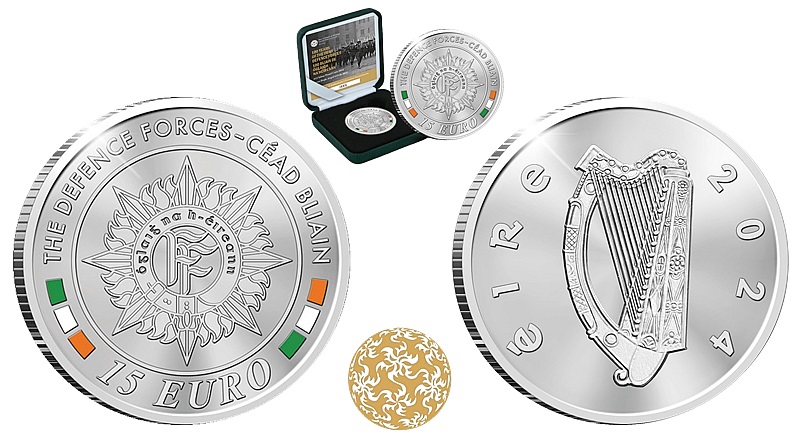
The proof and colour silver coins are produced by the Royal Dutch Mint at their facilities in Houten, Netherlands on behalf of the Central Bank of Ireland. The obverse side of the coin features the distinctive cap badge of the Defence Forces - Óglaigh na h-Éireann which is common to all Corps and Services and all orders of dress. The design originates from the badge of the Irish Volunteers and was designed by Professor Eoin MacNeill, Chairman of the National Executive of the Irish Volunteers and adopted by the Irish Volunteers in October 1914 as the official badge of the organisation. The Centrepiece is formed of the letters FF representing Fianna Fáil. The word Fianna is the name of Ireland’s ancient military organisation, circa 3rd Century A.D. forming what then corresponded to the standing Army of the country. The word Fáil translates as ‘Destiny’. Above the primary design along the upper rim is the commemorative text THE DEFENCE FORCES - CÉAD BLIAIN (Centenary). Below is the denomination 15 EURO and on either side of the coins’ face value are the colours of the Irish flag of green, white and orange shown as a small banner. The reverse side depicts the national insignia of Ireland, the cláirseach or Celtic harp which is centred. The text EIRE and 2024 are positioned on either side of the harp.
| Denomination | Metal | Weight | Diameter | Quality | Mintage Limit |
| 15 Euro | .925 Silver | 28.2 g. | 38.6 mm. | Proof & Colour | 2,000 |
Available from the 8th October, each coin is encapsulated and presented in a Central Bank of Ireland branded custom case accompanied with a certificate of authenticity. For additional information on this and other coins available from the Central Bank of Ireland, please visit their retail e-webshop.

Download the Greysheet app for access to pricing, news, events and your subscriptions.
Subscribe Now.
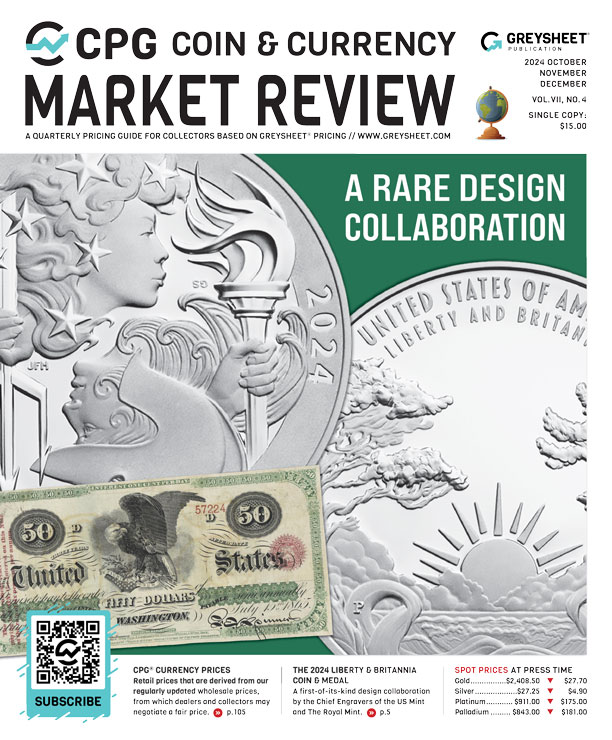
Subscribe to CPG® Coin & Currency Market Review for the industry's most respected pricing and to read more articles just like this.
Author: Michael Alexander


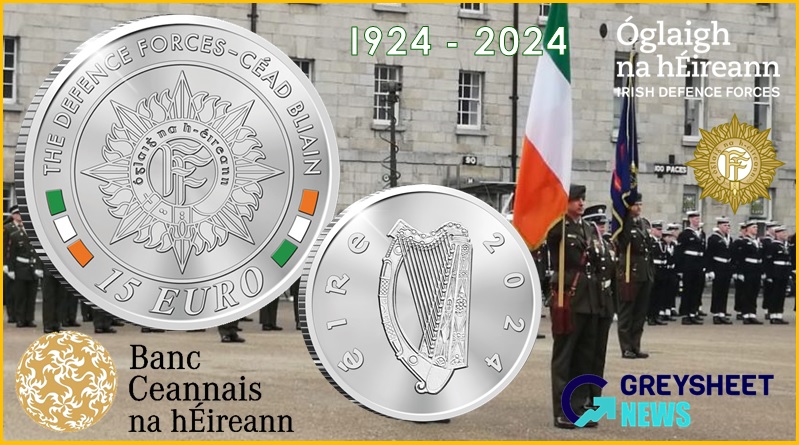






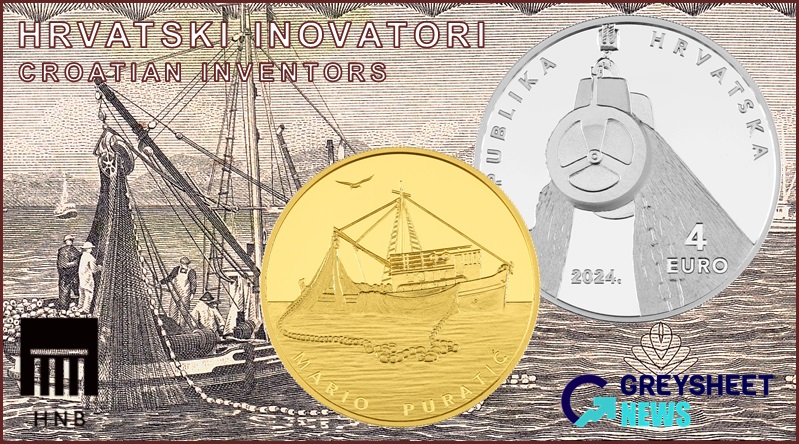
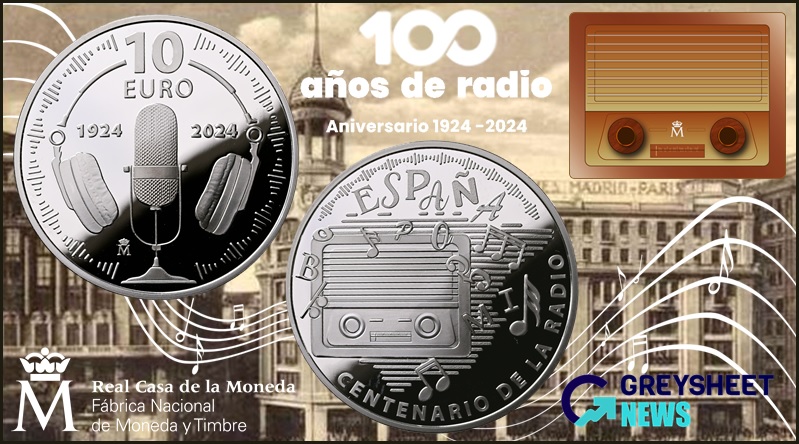
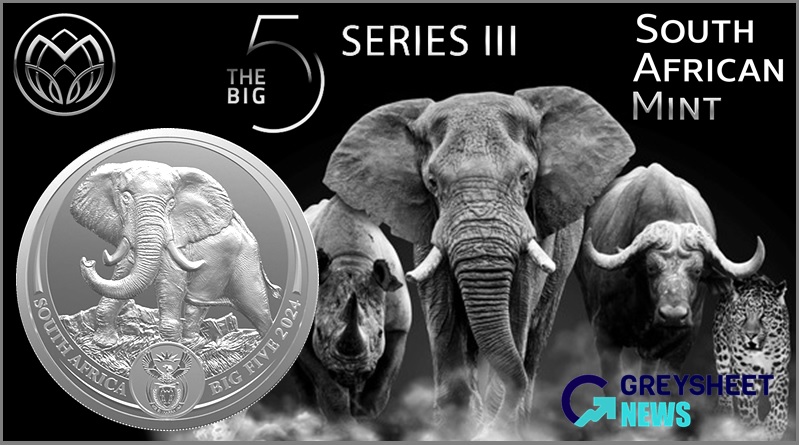
Please sign in or register to leave a comment.
Your identity will be restricted to first name/last initial, or a user ID you create.
Comment
Comments